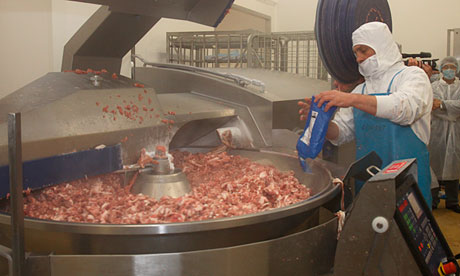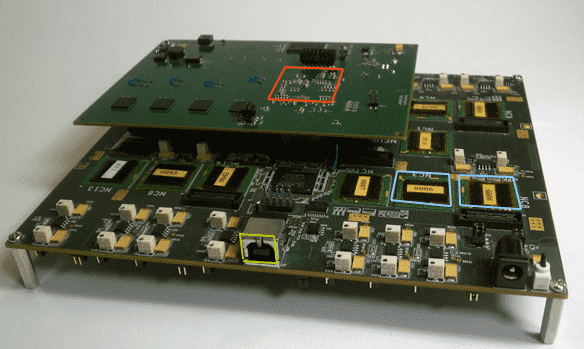FG and Labour have now reached an agreement on Irish water charges


WATER NETWORK IS TO GET A €200M UPGRADE OVER THE NEXT TWO YEARS, INSET, MINISTER FOR THE ENVIRONMENT PHIL HOGAN
Minister for the Environment Phil Hogan confirmed an agreement has been reached between the Government parties on water charges.
“We have an agreement reached between Fine Gael and Labour in relation to the water reform package and it will be released after the Cabinet meeting tomorrow,” he said at an event in Co Westmeath last night.
The deal will include concessions for those on lower incomes. Ultimately the package will have to be signed off by the regulator, Minster Hogan pointed out. However, he promised a lot of specifics tomorrow.
“We are going to ensure that families are protected, that the lower income people and particularily people on fixed incomes are going to receive the maximum protection.”
Mr Hogan assured the people of Co Roscommon that they would have a proper “much better water quality supply” by the end of 2015.
Hoists and larger beds on standby as morbidly Irish obese expectant mums on the increase
One in six expectant mothers are obese and medical staff are struggling to find wheelchairs and beds big enough to cope.
Startling figures also reveal how almost 2% of pregnant women at the Coombe maternity hospital – a total of 150 – last year were classed as ‘morbidly obese’.
Professor Michael Turner from the UCD Centre for Human Reproduction said the figures reflect a nationwide trend of worrying obesity among pregnant women.
“The figures for the Coombe are close to the national rate,” said the Professor of Obstetrics and Gynaecology from the Coombe Women and Infants University Hospital.
“We are having difficulty finding beds and wheelchairs that are big enough for morbidly obese women. One in six dads is obese as well.”
Prof Turner said there is a need for specialised equipment such as extra wide wheelchairs, examination couches and beds along with hoists and special delivery beds in Irish maternity units.
50% of Irish employees spend an average of 39 minutes on social media during working day


A total of 59% of workers access social media sites during their shift and spend an average of 39 minutes per working day on their own preferred websites.
More than half of employees in Ireland are unable to complete a working day without logging onto their favourite social media networks to check up on their friends’ latest activity.
A total of 59% of workers access social media sites during their shift and spend an average of 39 minutes per working day on their own preferred websites.
The social media and employment report, published today by law firm William Fry, studies the use of social media in the workplace and the measures Irish employers have taken to control the social media phenomenon.
Companies in Ireland have begun to manage their employees’ use of Facebook, Instagram and Twitter among others with 42% of companies saying they have implemented a social media policy. This figure is up from 31 per cent in 2013.
However, only 54% of the employees in these companies have read the company social media policy and less again claim to understand it.
The report claims that the 58% of Irish companies who have yet to publish a social media strategy are leaving themselves and the business open to possible legal issues in relation to social media usage by employees.
One potential problem is the issue of ‘ownership’ in social media.
A staggering 95% of employers have not discussed with their employees the ownership of work-related contacts on their employees’ personal social media accounts. These could be of significant value to the workplace and it isn’t made clear who has right to the contacts if an employee decides to leave the company.
Catherine O’Flynn Partner in William Fry’s Employment & Benefits Department said it is time for Irish companies to realise that social media usage in the workplace is an issue that needs to be dealt with.
“How social media affects the workplace is an issue that employers need to consider and deal with. Having a social media policy and instilling best social media practice within their organisation is hugely important,” Ms O’Flynn said.
“Litigation in this area is increasing and employers need to be best placed to protect their assets, their brand and their reputation from potential damage.”
FSAI launches new horse meat tests as part of EU-wide strategy


No plans to test lamb dishes, in spite of UK findings that other kinds of meat were used in almost a third of samples from takeaways tested by the Food Standards Agency.
The Food Safety Authority of Ireland (FSAI) has begun a fresh round of DNA testing of beef products as part of an EU-wide plan to prevent horse meat adulteration.
 Some 50 samples of burgers, ready meals and other beef products will be checked for horse meat DNA and the results published soon after.
Some 50 samples of burgers, ready meals and other beef products will be checked for horse meat DNA and the results published soon after.
The European Commission said it would publish all results from member states before the end of July.
TESTING FRENZY
In January of last year the FSAI discovered horse meat in beef burgers manufactured here, sparking an EU-wide frenzy of testing which affected most of the continent.
The European Commission then directed EU member states to carry out more than 7,000 tests to detect the presence of equine DNA and veterinary drug phenylbutazone.
Overall, less than 5 per cent of the tested products contained horse DNA and Ireland was one of only five countries where no beef products tested positive for horse DNA. France found more cases of horse meat in beef products, followed by Greece.
About 0.5 per cent of the equine carcasses tested were found to be contaminated with phenylbutazone, or bute. This is an anti-inflammatory painkiller which can be dangerous to humans if ingested in large doses.
In the Irish tests, one sample out of 840 had traces of bute.
As well as conducting the EU tests for horse meat, the UK’sFood Standards Agency is also testing lamb dishes from takeaways following evidence that cheaper meats such as beef, chicken and turkey were being used in lamb dishes.
Not lamb takeaway
Its review of local authority sampling data, from July to December last year found that 43 out of 145 samples of lamb takeaway meals contained meat other than lamb.
Of these, 25 were found to contain only beef. Other meat species identified included chicken and turkey.
Asked if the FSAI would also be testing lamb dishes, a spokeswoman said the authority did not have any plans to do so.
However, she added that it was not the practice of the FSAI to give prior notice of tests as this would alert food fraudsters.
East Antarctica highly vulnerable to massive ice melting process and rising sea levels


ICE MELT WILL INEVITABLY LEAD TO THE RISE OF THE SEA LEVEL.
An area of East Antarctica is more vulnerable to thawing than previously believed, which could lead to a massive rise in sea levels.
According to Reuters, an area known as the Wilkes Basin, measuring 600 miles inland, could cause a sea level rise of 10-13 feet if it were to melt as a result of global warming. If a certain “ice plug” melts away, it could lead to a massive ice slide.
“East Antarctica’s Wilkes Basin is like a bottle on a slant,” study lead author Matthias Mengel, of the Potsdam Institute for Climate Impact Research, said in a press release. “Once uncorked, it empties out.”
A co-author of the study, fellow Potsdam researcher Anders Levermann said the ice slide would not be stoppable or reversible if it were to begin. The researchers said there will still be time to slow warming and preserve the “ice plug.”
“The full sea-level rise would ultimately be up to 80 times bigger than the initial melting of the ice cork,” Levermann said in the release. “Until recently, only West Antarctica was considered unstable, but now we know that it’s ten times bigger counterpart in the East might also be at risk.”
The Intergovernmental Panel on Climate Change (IPCC), a United Nations group of environmentalists and scientists, recently finished an in-depth report on global warming. The report said immediate action needs to be taken to curb manmade greenhouse gases, but droughts, heat waves, large storms and rising sea levels are bound to increase. The study is the first to measure the risk in East Antarctica.
“This is the underlying issue here,” said Mengel. “By emitting more and more greenhouse gases we might trigger responses now that we may not be able to stop in the future.”
A circuit board that is 9,000 times faster than our current computers
AND IT’S BASED ON A HUMAN BRAIN
16 chips can simulate 1 million neurons and billions of synaptic connections & $40,000 system could drive prosthetic limbs
Researchers have unveiled a radical new type of computer designed to work like the human brain.
Called Neurogrid, the circuit board can simulate 1 million neurons and billions of synaptic connections.
EXPERTS SAY IT CAN RUN 9,000 TIME FASTER THAN CURRENT COMPUTERS.
Researchers say computers pale in comparison to the brain.
The modest cortex of the mouse, for instance, operates 9,000 times faster than a personal computer simulation of its functions.
Not only is the PC slower, it takes 40,000 times more power to run, write Kwabena Boahen, associate professor of bioengineering at Stanford, in an article for the Proceedings of the IEEE.
‘From a pure energy perspective, the brain is hard to match,’ says Boahen, whose article surveys how “neuromorphic” researchers in the United States and Europe are using silicon and software to build electronic systems that mimic neurons and synapses.
Boahen and his team have developed Neurogrid, a circuit board consisting of 16 custom-designed ‘Neurocore’ chips.
Together these 16 chips can simulate 1 million neurons and billions of synaptic connections.
The team designed these chips with power efficiency in mind. Their strategy was to enable certain synapses to share hardware circuits.
The result was Neurogrid – a device about the size of an iPad that can simulate orders of magnitude more neurons and synapses than other brain mimics on the power it takes to run a tablet computer.
The National Institutes of Health funded development of this million-neuron prototype with a five-year Pioneer Award.
Now Boahen stands ready for the next steps – lowering costs and creating compiler software that would enable engineers and computer scientists with no knowledge of neuroscience to solve problems – such as controlling a humanoid robot – using Neurogrid.
Its speed and low power characteristics make Neurogrid ideal for more than just modeling the human brain.
Boahen is working with other Stanford scientists to develop prosthetic limbs for paralyzed people that would be controlled by a Neurocore-like chip.
‘Right now, you have to know how the brain works to program one of these,’ said Boahen, gesturing at the $40,000 prototype board on the desk of his Stanford office.
HOW IT WORKS
 The Neurogrid circuit board consists of 16 custom-designed ‘Neurocore’ chips.
The Neurogrid circuit board consists of 16 custom-designed ‘Neurocore’ chips.
Together these 16 chips can simulate 1 million neurons and billions of synaptic connections. The team designed these chips with power efficiency in mind.
Their strategy was to enable certain synapses to share hardware circuits.
It currently costs $40,000, but by switching to modern manufacturing processes, they could be made for $400, enabling them to be used to control prosthetic limbs




No comments:
Post a Comment